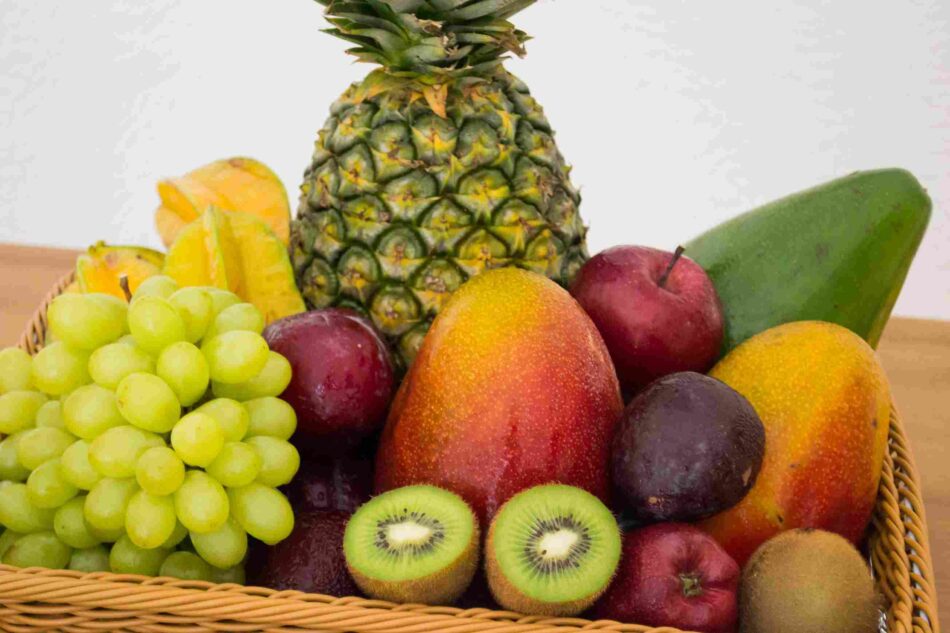Eating fruits and vegetables daily is part of the foundation for a healthy diet. A healthy diet can lower the risk for many diseases, enhance well-being, improve energy, and manage weight.
Getting plenty of fruits and vegetables in your daily diet can be challenging, but there are easy ways to incorporate these foods into your meals and snacks.
We will share seven tips to help you eat more fruits and vegetables throughout the day. We will also discuss how and why increasing your produce intake can improve overall health and wellness as well as the connection between healthy eating and more affordable insurance rates.
Life Insurance and Healthy Eating
One benefit of healthy eating is to help manage weight to keep it within a healthy range. A healthy weight is important to make daily activities easier and to lower the risk for many chronic health conditions.
Life insurance is necessary to protect your family’s finances in case something unexpected happens to you.
Life insurance rates are based on your age, gender, occupation, medical history, and health status. These rates are the cheapest when you are young and healthy. You can get life insurance when overweight, but it may be more expensive and depends on your other health issues.
No matter what you weigh, you should compare life insurance rates online or meet with an agent to find the best deals. You should also eat a healthy and varied diet with plenty of fruits and vegetables for the best health and wellness outcomes.
Benefits of Fruits and Vegetables
Fruits and vegetables are nutrient powerhouses because they contain vitamins, minerals, and other nutrients with few calories. They also provide low amounts of fat and sodium with no added sugar.
These two food groups are also high in fiber, which helps prevent constipation, gives you a feeling of fullness, and can lower cholesterol levels.
Fruits have natural sugar to help satisfy your sweet tooth and can replace unhealthy high-calorie desserts. Fresh seasonal produce is an inexpensive option as well as frozen fruits and vegetables. The following tips can help you increase your daily consumption of these nutrient-dense food groups.
1. Eat Fruits and Vegetables as a Daily Snack
Snacks can be easy and convenient if you plan them with a fruit or vegetable option, plus one other food group. Try pairing it with a protein option for a balanced snack.
Great ideas include celery and peanut butter, apple slices with cheese, or bell peppers with hummus for healthy and tasty pairs.
2. Give Frozen a Try
Frozen fruits and vegetables are usually cheaper than their fresh counterparts, which can help you save money. They are also frozen at peak quality so they retain many vitamins and minerals for good health.
3. Aim for Two at Each Meal
One easy goal is to aim for two different fruits or vegetables at each meal. You can track them with technology using a diet tracking app or on a notepad.
For breakfast, try banana and strawberry slices on your oatmeal. For lunch, mix tomatoes, cucumbers, and spinach for an easy side salad. For dinner, mix black beans and corn for a tasty southwestern mix.
4. Find Your Favorites
There’s nothing wrong with repeating your favorite fruit and vegetable options. Eating a variety of different colored fruits and vegetables gives you a variety of different vitamins, minerals, and antioxidants. But if you have favorites, there’s nothing wrong with repeating them if it helps you eat more in your daily meals and snacks.
5. Sneak Them in
One other option is to sneak or hide vegetables into your recipes. This may be useful if you have picky eaters or struggle with getting a variety of vegetables into your meals.
A food processor or blender is helpful to sneak more veggies into meals. You can add pureed carrots in spaghetti sauce, crushed tomatoes to your meatloaf, or diced peppers to your chicken tacos. There are a number of recipes online to help you add hidden vegetables to meals.
6. Try Them Different Ways
Some people prefer the crunch of a raw vegetable, but some prefer the texture of a cooked vegetable. Frozen, fresh, and canned vegetables can all taste a little different, so try all of them to see what your family prefers.
7. Freeze Unused Vegetables
Anytime you have unused vegetables from dinner, add them to a freezer-safe container or bag. When the bag is full, you have a medley for vegetable soup.
These seven tips will help you eat more fruits and vegetables to enjoy the many benefits of a healthy and balanced diet.
Melissa Morris writes and researches for the life insurance comparison site, Clearsurance.com. She is a university professor of nutrition and a certified sports nutritionist.







